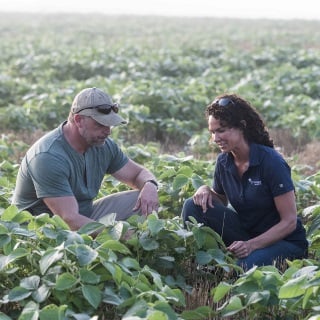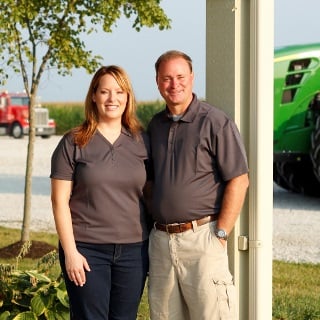Current challenges facing the lumber industry
Following a period of strong demand and high prices, the hardwood lumber industry began to experience a downward cycle in 2022. In addition to lower lumber prices, producers are navigating higher costs because of inflation.
Despite this, Farm Credit Mid-America’s experts who specialize in the industry are confident that lumber producers still have options to make the most of the current market.
“Times like these challenge producers to reflect on the way they’ve been doing business. It is an opportunity to get out and explore what other opportunities are available in the marketplace,” says Josh Davis, vice president of food and agribusiness. “There are always opportunities, even in a challenging market.”
Tips to help lumber producers stay resilient in tightening markets
Proper balance sheet management is crucial in any economic cycle, and one way producers can prepare for inevitable market changes. Those who maintain a healthy amount of working capital and keep a close eye on their leverage position will be better equipped to face challenging times.
“Our customers are the experts in their industry, and we serve as a strategic partner providing financial perspective,” says Josh. “We talk a lot about building a war chest of working capital. Liquidity is critically important in this industry because it is the first line of defense for weathering challenging markets. When challenges do arise, producers often shift their focus to preserving working capital rather than building it.”
In the current market cycle, our experts recommend that producers:
- Revisit their budget and determine which items are essential and which items are optional as they make decisions about expenditures.
- Put projects that aren’t essential on hold temporarily to help preserve working capital.
- Maintain a healthy leverage position that leaves the operation with dry powder. This dry powder enables them to term out losses or even replenish working capital. It also positions producers to take advantage of opportunities that arise.
The many of the challenges of 2023 will likely persist as we move into the new year. Anyone evaluating their financial strategy for 2024 should focus on building a strategic relationship with a financial partner that understands the nuances of the lumber industry.
Find a strategic partner
As a financial services cooperative, Farm Credit Mid-America is owned by its customers. Because customers have a voice in the cooperative’s decision-making process, we are uniquely positioned to be a strategic financial partner to producers, including those in the lumber industry.
“Our cooperative structure allows us to do things a traditional bank doesn’t do, and that includes returning a portion of our earnings to customers through our Patronage Program*,” said Seth Patton, a financial officer in Mt. Sterling, Kentucky.
Farm Credit Mid-America’s Patronage Program is an annual decision made by its board of directors to return capital to eligible customers. Those cash patronage funds are often invested back into customers’ operations to cover operating expenses, pay for new equipment and more. Over the last seven years, the program has returned more than $1 billion to patronage-eligible customers.
“The smiles that you see during patronage week definitely drive home the why we do what we do,” said Seth.
Another factor that differentiates Farm Credit Mid-America from other lenders is our mission to secure the future of rural communities and agriculture. Many of our team members are involved in production agriculture themselves and understand the unique challenges that producers face.
As part of the Farm Credit System, we have supported producers for more than 100 years. Because of our long history in the industry, customers can rely on Farm Credit Mid-America in both upward and downward markets.
“We have been through cycles like this before, and we understand the nature of the industry,” says Josh. “When customers face a challenging cycle like this, they know they can reach out to us to find solutions and navigate the challenges together.”
While there is no silver bullet for weathering the current market, having a strategic partner in your corner can help you find solutions for your operation.
*Patronage is an annual decision made by the Board of Directors to return earnings to eligible customers. To learn more about patronage or patronage eligibility, please visit our Patronage page.






